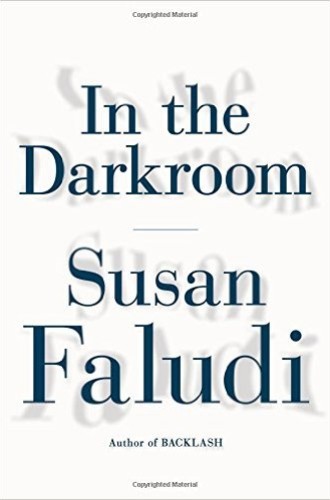István to Steven to Stefánie
Susan Faludi’s memoir reveals the deep complexity of her father’s many identities.
"I’ve got some interesting news for you,” the e-mail began. “I have had enough of impersonating a macho aggressive man that I have never been inside.” Attached were photos of the sender sporting wigs, ruffles, and high-heeled sandals. And that was how Steven Faludi, aged 76, announced to his long-estranged daughter that he had become Stefánie.
As it happens, Stefánie’s daughter and the teller of his tale is Susan Faludi, a Pulitzer Prize–winning journalist and prominent feminist author (Backlash, 1991; Stiffed, 1999) who has said she is “all for smashing the gender binary.” A transsexual parent who wants to be referred to as both father and she? No problem. But a newly minted stereotypical woman who flutters and flirts, feigns helplessness, and loves pearls? Oh dear.
Read our latest issue or browse back issues.
Susan’s reaction to Steven’s transition into Stefánie could be the set-up for a comic novel. It’s already the focus of dozens of reviews and interviews. No wonder: it’s the kind of story that compels most of us to take a second look, whether from prurience, empathy, or curiosity. And yet this book is much more than an account of Stefánie’s late-life sexual metamorphosis.
In the Darkroom is by turns a hilarious and sometimes ribald story, a poignant memoir of father and daughter painfully reaching out to one another, a sobering history of past and current racial oppression in Hungary, a reportorial peek into life in the transgender community, and a deeply philosophical examination of the meaning of identity, both personal and national. Somehow Faludi keeps the disparate strands together without ever weighing down her complex portrait of her complicated parent.
And her father was extraordinarily complicated: he had reinvented himself several times before discovering he was, at heart, a woman. Born in Budapest to a wealthy Jewish family, he started life in 1927 as István Károly Friedman. As a teenager during World War II, he posed as a Nazi Christian and spied for the Hungarian underground. At age 18, he changed his last name to the more Hungarian-sounding Faludi and, aiming to become a filmmaker, bluffed his way first to Denmark and then to Brazil.
In 1953, he gave up his budding avant-garde career to follow a woman to New York. Soon he was reincarnated as Steve: a midcentury family man with a wife, two children, a house in the suburbs, a workshop in the basement, and a long commute to his job as a photo editor at Condé Nast.
At home, however, he had turned into a tyrant. His children feared him. His wife began seeing another man. He grew increasingly violent. After he attacked his wife’s lover with a baseball bat and a Swiss army knife, the Faludis divorced. Steven moved back to Budapest. In 2004, when the e-mail announcing the surgery arrived, Susan had had virtually no contact with her father for 25 years.
But some messages can’t be ignored, especially if you’re a journalist. Faludi grabbed her tape recorder and “a single-spaced ten-page list of questions” and boarded the first of many flights to Budapest over the next 11 years.
Gradually she teased out her father’s story, in spite of Stefánie’s frequent stonewalling. “An idiotic thing. Not relevant,” she would say whenever her daughter got too close to events that did not support her current persona. Faludi persisted, interviewing family members, friends, medical personnel, and politicians. In her father’s identity search, she discovered, war, genocide, and political upheavals played a major role.
Like many assimilated Jews, Stefánie’s family had prospered during Hungary’s late 19th-century “golden age.” But humiliated and impoverished after World War I, Hungary, like Germany, turned on its large Jewish population. From 1920 to 1945, the majority of Hungary’s Jews lost their property, their jobs, their freedom, and eventually their lives. By war’s end, Faludi writes, “one of every three people murdered in Auschwitz was a Hungarian Jew.” Scores of young István’s close relatives were among the dead.
Faludi, a compelling writer, makes Hungary’s history and present-day political realities even more fascinating than her father’s gender reassignment—and disturbingly relevant to America’s divisive 2016 election. In 2010, Stefánie, still craving Hungarian identity, voted for the conservative Fidesz party and its leader, Viktor Orbán. Susan was appalled. Under the new government, she writes, “the Hungarian Constitution was rewritten, expanding the powers of the state, curtailing civil liberties, defining life as beginning at conception and abortion as homicide, and forbidding same-sex marriage.” Poverty increased as social services were cut. “By 2013, one-third of Hungarian citizens between the ages of eighteen and thirty-nine were telling pollsters they harbored animosity toward Jews.” In 2014 Orbán was reelected, promising that his party would “make Hungary great in the next four years.”
Meanwhile Stefánie, now well into her eighties, was softening. Susan learned more about her father’s past. The two of them “seemed to have arrived at an understanding, even a closeness.” And then Stefánie’s mind broke down.
“They say that dementia is a disintegration of the self, a bleeding away of identity,” Faludi writes. “Watching it take over my father’s life that winter, I was tempted to think of it as the opposite: an onrush of all that she had been, all that she had experienced, suffered, fled. The paranoia and hallucinations afflicting her were rooted in the realities of her past, the histories she had walled off. Those histories now flooded into every synapse.” In the spring of 2015, Stefánie died—not at peace, but with her daughter nearby.
In that same year, Hungary—in a frightening allusion to 1944—began turning away refugees, locking them in train cars without drinking water and sending them off to camps. In 2015, blaming immigrants for taking Hungarian jobs, Orbán “ordered the construction of a thirteen-foot razor-wire fence along the 110-mile border with Serbia . . . (and soon after, another one on the border with Croatia).” Fourteen months after Stefánie Faludi died and six weeks after In the Darkroom was published, Viktor Orbán became the first European leader to endorse Donald Trump.







